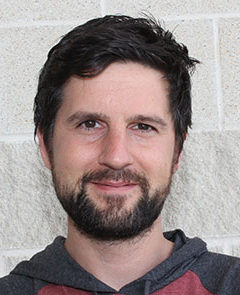Postdoctoral Research Associate

Contact Information (CV)
Email: pieyer@live.fr
I graduated in 2014 with a PhD in Ecology and Evolutionary Biology in Serge Aron’s lab in Brussels, questioning the evolutionary mechanisms underlying the diversity of reproductive strategies uncovered in desert ant species.
As a post-doc in Abraham Hefetz’s lab at Tel Aviv University, and at the Museum of Natural History in Paris in Claudie Doums’ lab, I investigated how distinct reproductive strategies, having profound implications in dispersion, differentially shape the exchange of gene flow among populations and, hence speciation processes.
A year ago, I joined Ed Vargo’s lab in Texas A&M University to unravel how introduced species exhibit pre-adaptative or post-introduction plasticity in reproductive strategies allowing them to circumvent genetic depletion to successfully establish and achieve local dominance after a founder event.
In the invasive Asian needle ant Brachyponera chinensis, we found that bottleneck at the population scale has not affected the diversity or the level of heterozygosity within colonies, as inbreeding is not a consequence of the founder event, but it is due to mating between sibs that pre-existed in native populations. This suggests generations of sibmating in native populations might have pre-adapted B. chinensis to invasion, reducing inbreeding depression through purifying selection of deleterious alleles.
In the tawny crazy ant Nylanderia fulva, we highlighted a shift in colony structure following invasion. In its native range, colonies are separated from one another, whereas no boundaries between nests are found in its invasive range. This genetic result is confirmed by a lack of aggression towards conspecifics. This suggests that N. fulva forms a single supercolony spreading more than 2000km covering its entire invasive range. This social structure provides several advantages in terms of colony growth, density, productivity and survival, and surely favors its invasive success outcompeting native species through resource monopolization.
In N. fulva, we also highlighted drastic genetic differences between males and females. These very unusual genotype frequencies might stem from a differential selection of alleles, with queens preferentially transmitting paternal alleles to their sons and maternal ones to their daughters. As a consequence, the sexually produced female castes are highly heterozygous as they always inherited different alleles from their mother and father. This strategy allows N. fulva to maintain heterozygosity and overcomes the depletion of genetic diversity resulting from the founder event.
Education
2010-2014. Ph.D. thesis (Evolutionary Biology and Ecology, Université Libre de Bruxelles, Belgium)
Reproductive strategies and genetic diversity in Cataglyphis desert ants
Advisor: Serge Aron
2010. Master thesis (Evolutionary Biology and Ecology, Université Libre de Bruxelles, Belgium)
Reproductive strategies of the ant Cataglyphis velox
Advisors: Serge Aron & Laurianne Leniaud;
2008-2010. Master degree in Ecology & Populations Biology (University of Angers, France)
2005-2008. Bachelor degree in Animal Biology (University of Angers, France)
Publications
Aguero CM, Eyer P-A, Crippen TL, Vargo EL (2021) Reduced environmental microbial diversity on the cuticle and in the galleries of a subterranean termite compared to surrounding soil. Accepted in Microbial Ecology
Aguero CM, Eyer P-A, Vargo EL (2020) Increased genetic diversity from colony merging in termites does not improve survival against a fungal pathogen. Scientific Reports, 10, 4212.
Khimoun A, Doums C, Molet M, Kaufmann B, Peronnet R, Eyer P-A, Mona S (2020) Urbanization without isolation: the absence of genetic structure among cities and forests in the tiny acorn ant Temnothorax nylanderi. Biology Letter, 16: 20190741.
Eyer P-A, Espinoza EM, Blumenfeld AJ, Vargo EL (2020) The underdog invader: breeding system and colony genetic structure of the dark rover ant (Brachymyrmex patagonicus Mayr). Ecology & Evolution, 00: 1-13.
Eyer P-A, Blumenfeld AJ, Vargo EL (2019) Sexually antagonistic selection promotes genetic divergence between males and females in an ant. Proceedings of the National Academy of Sciences USA, 201906568.
Eyer P-A, McDowell B, Johnson LNL, Calcaterra LA, Fernandez, MB, Shoemaker D, Puckett RT, Vargo EL (2018) Supercolonial structure of invasive populations of the tawny crazy ant Nylanderia fulva in the US. BMC Evolutionary Biology, 18, 209.
Eyer P-A, Matsuura K, Vargo EL, Kobayashi K, Yashiro Y, Suehiro W, Himuro C, Yokoi T, Guénard B, Dunn RR, Tsuji K (2018) Inbreeding tolerance as a pre-adapted trait for invasion success in the invasive needle ant Brachyponera chinensis. Molecular Ecology, 27, 4711-4724.
Eyer P-A, Hefetz A (2018) Cytonuclear incongruences hamper species delimitation in the socially polymorphic desert ants of the Cataglyphis albicans group in Israel. Journal of Evolutionary Biology, 31, 1828-1842.
Saar M, Eyer P-A, Kilon-Kallner T, Hefetz A, Scharf I (2018) Within-colony genetic diversity differentially affects foraging, nest maintenance, and aggression in two species of harvester ants. Scientific Report, 8, 13868.
Eyer P-A, Seltzer R, Reiner-Brodetzki T, Hefetz A (2017) An integrative approach to untangle
species delimitation in the desert ants of the Cataglyphis bicolor complex in Israel. Molecular
Phylogenetic and Evolution.
Iunesco A, Eyer P-A (2016) Notes on Cataglyphis Foerster, 1850 species belonging to the bicolor
species-group in Israel; and a description of a new species. Israeli Journal of Entomology.
Eyer P-A, Leniaud L, Tinaut A, Aron S (2016) Social hybridogenesis shapes complex
phylogeographic patterns in Cataglyphis desert ants. Molecular Phylogenetic and Evolution.
Aron S, Darras D, Eyer P-A, Leniaud L, Pearcy P (2014) Colony genetic structure and breeding
system in the ant Cataglyphis viatica (Fabricius, 1787). Bull. Inst. Sci. Rab.
Eyer P-A, Freyer J#, Aron S (2013) Genetic polyethism in the polyandrous desert ant Cataglyphis
cursor. Behavioral Ecology 24, 144-151. #Supervised master student.
Eyer P-A, Leniaud L, Darras H, Aron S (2013) Hybridogenesis through thelytokous parthenogenesis
in two Cataglyphis desert ants. Molecular Ecology 22, 947-955